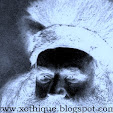Around this season I consumed the above volume by
Flannery O'Connor
This was a first for me -- the first time I'd rolled through anything by O'Connor. I previously possessed a misty impression of her as a Southern Gothic writer, with comic or grotesque aspects -- not someone who sounded initially of interest to me. After soaking up Wise Blood, and the short story collection A Good Man is Hard to Find, and The Violent Bear it Away, I realized that here was an enormously thoughtful and precise artist, a huge talent. A large portion of individual sentences in this omnibus held up by themselves, endlessly rich and quotable: Take "A dark yellow sun was beginning to rise in a sky that was the same slick dark gray as the highway," from "The Displaced Person." Someone I know characterized O'Connor's style as "clairvoyant;" there is a sense for me, as with the above quotation, of Cézanne's or Van Gogh's landscapes, filtered through Conrad's prose.O'Connor adumbrated her own premature demise, at the age of 39, with her death-saturated writing, brimming with coffins, corpses, murder. Her celebrated religiousness was ambiguous, never oppressive or dogmatic. Her work is grounded in the south, but resonated with universal appeal. The white elephant in her realm, at least in some of the works in 3 by Flannery O'Connor, was racism. The narrator behind her fiction employed racist terms and racist portrayals overly much in places. However, the white characters are often obtuse, rigid and flawed, themselves.
Flanner O'Connor is an author I will visit again.







